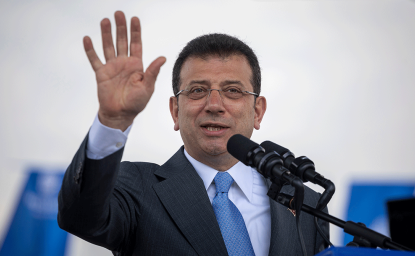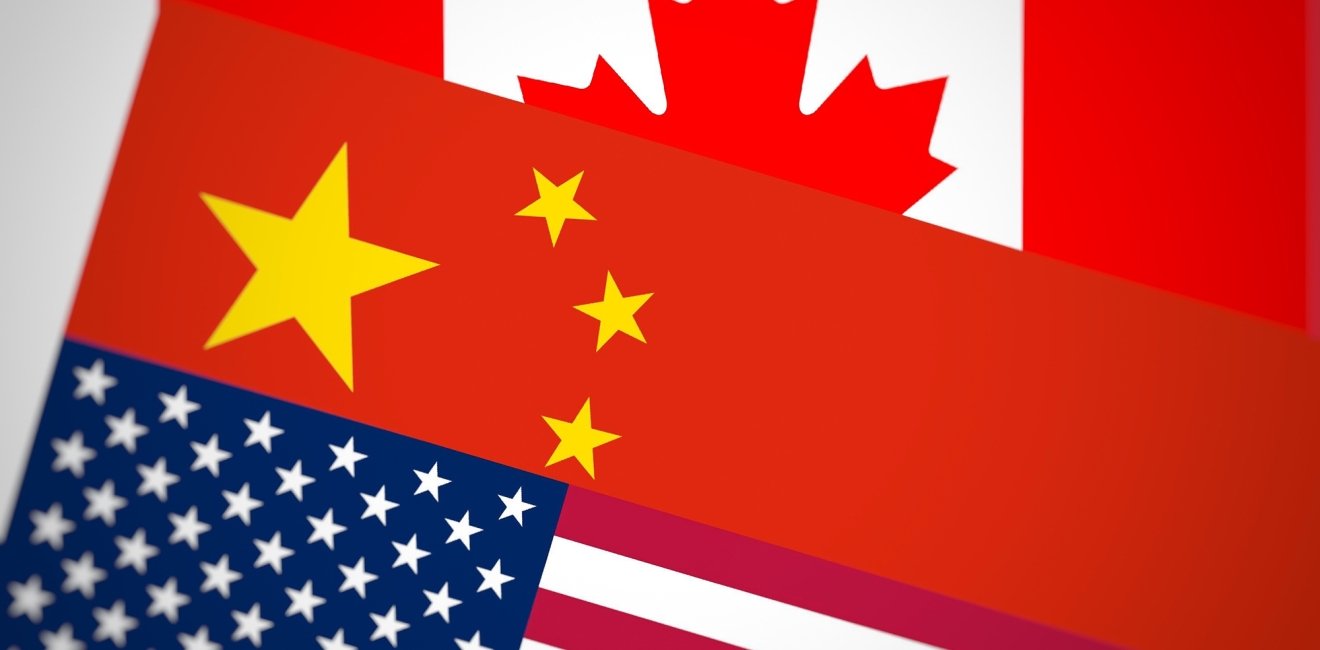When President Joe Biden and Prime Minister Justin Trudeau met virtually in February at their first bilateral meeting, it was a reunion of old friends. Although cordial and warm, both sides acknowledged the bilateral relationship would enter a new chapter following four tumultuous years under the Trump administration. Simply put by Trudeau, “There’s a lot to rebuild.”
Canada and the United States (U.S.) need to rethink and reinvigorate the partnership model that, for many decades, has served both countries well. The partnership model that defined the Canada-U.S. relationship was shaped by shared security and economic interests. Shared values, geography, and history allowed both countries to forge a relationship that is unlike any other in the world. Increasingly, however, the partnership model has been challenged by diverging interests with growing domestic economic anxiety and national security concerns. For both countries, China has been a key driver in challenging the partnership.
Degraded in recent years, rebuilding the Canada-U.S. partnership will require significant attention, upkeep and maintenance. However, it will be a worthy investment of time and energy that will allow greater cooperation and understanding of each country’s priorities and interests.
The ‘Special’ Relationship
For generations, Canadian prime ministers and American presidents have touted the bilateral relationship between both countries as ‘special,’ forged by shared geography, similar values, common interests, and deep economic ties. In contrast, Trump demonstrated that the ‘special’ relationship could be easily disregarded. As a result, the relationship shifted from predictable to unpredictable, with Ottawa frequently on the defensive. This was most evident on trade issues. They included the renegotiation of the North American Free Trade Agreement, which transformed into the Canada-United States-Mexico Agreement (CUSMA); the U.S. tariffs placed on Canadian steel and aluminum citing national security concerns; and the U.S. extradition request of Huawei’s Chief Financial Officer Meng Wanzhou on fraud charges.
The last four years under Trump have hardened the Trudeau government and Canadians to the new realities of the bilateral relationship. Although the election of Joe Biden represents a return to traditional U.S. foreign policy, and in particular, normalized amicable relations between Canada and the U.S
Biden’s presidency comes at a time when the U.S. is facing a myriad of domestic crises and challenges: batting the COVID-19 pandemic, addressing racial and economic inequities, and strengthening a battered U.S. economy. Biden’s prioritization of U.S. domestic interests was evident in his “Buy American” Executive Order, which prioritizes using federal funds to buy American-made goods by American workers with American-made parts. Moreover, as countries around the world were trying to acquire COVID-19 vaccines, there was a strong reluctance to distribute U.S.-made vaccines worldwide, including to neighbour countries – Canada and Mexico.
For the U.S., elements of the relationship will inevitably be viewed through a domestic lens that will prioritize American interests. For Biden, foreign policy and domestic policy have become inextricably linked. As such, Canada must double down on its efforts in advancing Canadian interests with a Biden administration that is focused on a domestic agenda - the coronavirus, the economy, racial inequity, and climate change. Domestically, Canada also faces similar challenges. Advancing Canadian interests with the U.S. will require Ottawa to frame the relationship as mutually beneficial, recognizing the pressure created by the domestic realities of the U.S., which will further be heightened by the upcoming midterm and presidential elections in 2022 and 2024, respectively.
Like all relationships, there are disagreements between the two countries. Despite the ‘special’ relationship, Canada has pursued several independent policies from the U.S. and vice versa. Two decades ago, Canada refused to join the U.S.-led war with Iraq, in large measure due to a lack of authorization from the U.N. Security Council. When the U.S. withdrew from both Trans-Pacific Partnership and the Paris Agreement under President Trump, Canada remained. Likewise, the U.S. has also pursued an independent policy that goes against Canadian interests. Most recently, one of the first things Biden did after his inauguration was to cancel the permit to build the Keystone XL pipeline. Despite the unpopularity of these decisions, the relationship endured.
As friends, neighbours, allies and partners, collaboration and cooperation have always been the preferred method of relations between Canada and the U.S. Like a mantra, “more unites Canada and the U.S. than divides us.” Emphasizing this goodwill spirit, Biden and Trudeau announced the Roadmap for a Renewed U.S.-Canada Partnership at the conclusion of their February meeting. The roadmap prioritizes cooperation on combating COVID-19, ‘building back better,’ accelerating climate ambitions, advancing diversity and inclusion, bolstering security and defence, and building global alliances. However, the new roadmap fell short on describing how both countries would navigate their divergent interests. In other words: How will Biden and Trudeau navigate issues that are not in the interest of the other?
An Increasingly Global China
The topic of China plays a dominant role in shaping the Canada-U.S. bilateral relationship. For the U.S., one of the most urgent foreign policy priorities laid out by Secretary of State Antony Blinken is ‘confronting China’- viewed as the only country with the economic, diplomatic, military, and technological power that could pose a challenge to the international system. Viewed as a serious competitor, Biden said, “We’ll confront China’s economic abuses; counter its aggressive, coercive action; to push back on China’s attack on human rights, intellectual property, and global governance.” Like Trump, Biden will continue to take a tough stance on China, and as such, Canada will continue to find itself caught in the middle of great power competition.
Over the years, Canada has had to continually adapt its strategic interests with China, ranging from expanding its relationship in trade, investment and people-to-people relations with China to voicing concerns on values and human rights. Former Canadian Foreign Affairs Minister Francois Philippe Champagne said, “The China of 2020 is not the China of 2016.” When Trudeau was first elected, there was much optimism that the Canada-China relationship would enter a golden age. After all, his father and former Prime Minister Pierre-Elliott Trudeau formally established diplomatic ties between Canada and the Peoples’ Republic of China (PRC) in 1970, which also helped normalized relations between the PRC and the developed world. In fact, many believe that Trudeau Sr.’s engagement with China was key in then U.S. President Richard Nixon doing the same a few years later. Building on the legacies of his father, Trudeau visited China twice in 2016 and 2017 with the goal of advancing a free trade agreement (FTA). However, by 2020, Trudeau abandoned the idea of an FTA with China.
Relations between Canada and China quickly deteriorated following the arbitrary detention of Canadian citizens Michael Kovrig and Michael Spavor in retaliation for Canada’s arrest of Huawei’s CFO Meng Wanzhou at the request of the U.S. Department of Justice in December 2018. Moreover, China’s mass incarceration of the Uighur minority population in Xinjiang, the encroachment of Hong Kong’s democracy, and its expansion in the South China Sea helped erode the conditions to deepen Sino-Canadian relations. Today, the key China priority for the Trudeau government is to secure the release of the ‘two Michaels,’ who have remained arbitrarily detained in China for more than two years.
In contrast to Trump, Biden’s foreign relations strategy seeks to reinvigorate and rebuild alliances and coalitions. In particular, the new roadmap emphasizes that Canada and the U.S. will work closely to align their approaches to China. Although Canada is a natural partner in addressing China’s challenges to “coercive and unfair economic practices, national security challenges, and human rights abuses,” Canada also maintains distinct interests in its relations with China.
No bilateral relationship is more important to Canada than the Canada-U.S. relationship. As such, Canada-China relations have and will always operate in the shadow of Canada-U.S. ties. In a speech given to Norman Paterson School of International Affairs at Carleton University, Senator Yuen Pau Woo emphasized that this has been the case under all previous U.S. presidents and Canadian prime ministers, such as Diefenbaker and Kennedy, Trudeau Sr. and Nixon, Chretien and Clinton, or Martin and Bush. Canada has always had to weigh the costs and benefits of pursuing a China policy independent of the U.S. However, despite U.S. pressure, Canada has historically been successful in charting an independent policy on China.
If Canada seeks to advance a China policy that diverges from U.S. strategic interests, it needs to be positioned as being beneficial to the U.S. rather than a risk. The challenge will be for Ottawa to defend its position; however, there have been historical examples where Ottawa has taken an opposing position to U.S.’s strategic interests that over time has been viewed as being beneficial.
For instance, after the Cuban Revolution, Canada maintained diplomatic ties with Revolutionary Cuba despite pressures from the U.S. to isolate the country. Canada was an open critic of U.S. foreign policy on Cuba throughout the 60s and 70s. At times, bilateral relations between Canada and Cuba have been a source of contention between Canada and the U.S. When U.S. foreign policy on Cuba began to shift under President Barack Obama, Canada hosted most of the secret negotiations starting in June 2013. The discretionary role Canada played was critical given fierce domestic opposition in the U.S. Although Canada did not officially partake in the meetings, Canada was a pivotal broker in providing a secret and official channel for the US to engage with Cuba, which helped contributed to the normalization of relations between the American and Cuban governments.
In February, Canada and the U.S. cooperated on two issues in confronting China. On the first issue, Canada led a coalition with 57 other nations, including the U.S., that declared the use of arbitrary detention in state-to-state relations as illegal and immoral. Despite not signaling out any country by name, the declaration drew parallels with the detention of the ‘two Michaels.’ Secondly, in response to China’s persecution against Uyghurs and other Muslim minorities in China’s western Xinjiang province, Canada’s parliament passed a non-binding motion calling it a genocide, joining the U.S.’ declaration made by the previous administration. Shortly after, Canada also joined the United States, the United Kingdom and the European Union in placing sanctions on four high-ranking Chinese officials accused of participating in the human rights violations against the Uyghurs. The sanctions prompted a harsh verbal response from Beijing with retaliatory sanctions placed against Canadian and U.S. officials.
Most recently at the 47th G7 Meeting in Cornwall, a stronger stance emerged on China. Of significance was the announcement of a global infrastructure plan that would give developing countries a higher quality alternative to China’s Belt and Road Initiative. In contrast to China, the G7 would offer values-driven, high-standard, collaborative and transparent partnership. In addition, the G7 communique also called on China to address human rights and freedoms in Xinjiang and Hong Kong. Similarly, at the NATO Conference, leaders took a tough stance towards China stating that Beijing presented “systemic challenges to the rules-based international order and to areas relevant to the Alliance security.”
However, Canada has diverged from the U.S. in its policies towards Huawei 5G technology, as it is the only country of the Five Eyes intelligence alliance to not formally ban or restrict the technology in its networks. Despite repeated pressure from the Trump administration and bipartisan members of the U.S. Congress, the Canadian government maintains it is still conducting a national security review and will make a decision when it is prepared to do so. Other areas of divergence from the U.S will likely revolve around trade and investment with China where Canada is viewed as a competitor in areas of energy and agriculture. As the second-largest economy, it is difficult for any competitive country to ignore China.
In comparison to the past, today’s circumstances differs. China and the U.S. are deeply engaged in geopolitical competition and economic decoupling. As a result, Canada must manage its interests with China that does not threaten its relationship with the U.S. Likewise, the U.S. must ensure its strategic competition with China respects Canadian sovereignty, interests, and priorities. Stronger communication between Washington and Ottawa is needed to better understand each other’s interests and priorities. Both countries could start by building institutionalized structures to regularize communications between the two governments, which will be fundamental to ensuring a stronger Canada-U.S. partnership.
Coordination, Collaboration and Cooperation
As tensions continue to rise between China and the Western world, coordination, collaboration and cooperation among like-minded, democratic countries will be the preferred route for both Canada and the U.S. The ‘special’ relationship between the two countries is a natural starting point. However, for years, observers of the Canada-U.S. relationship have called for a renewal that does not perpetuate the ‘big brother – little brother’ dynamic, but rather fosters mutual respect and inclusion. Pursuing shared strategic interests is easy; the challenge lies in the pursuit of divergent interests. The China of 2021 is more aggressive, ambitious, and assertive. An increasingly global China presents a challenge to the partnership model that for decades has defined Canada-U.S. relations. This will require both Canada and the U.S. to better understand each other’s interests and priorities. Disagreements and differences are likely to occur, particularly in the realm of China, but the Canada-U.S. relationship will endure.
Author

Founder & CEO I Fondateur & Directeur Général, Canada China Forum I Forum Canada Chine

Canada Institute
The mission of the Wilson Center's Canada Institute is to raise the level of knowledge of Canada in the United States, particularly within the Washington, DC policy community. Research projects, initiatives, podcasts, and publications cover contemporary Canada, US-Canadian relations, North American political economy, and Canada's global role as it intersects with US national interests. Read more

Explore More
Browse Insights & Analysis
Greenland’s New Governing Coalition Signals Consensus

Myanmar’s Junta and the 2026 Elections: A Fig Leaf for Legitimacy?




